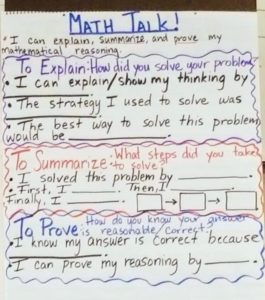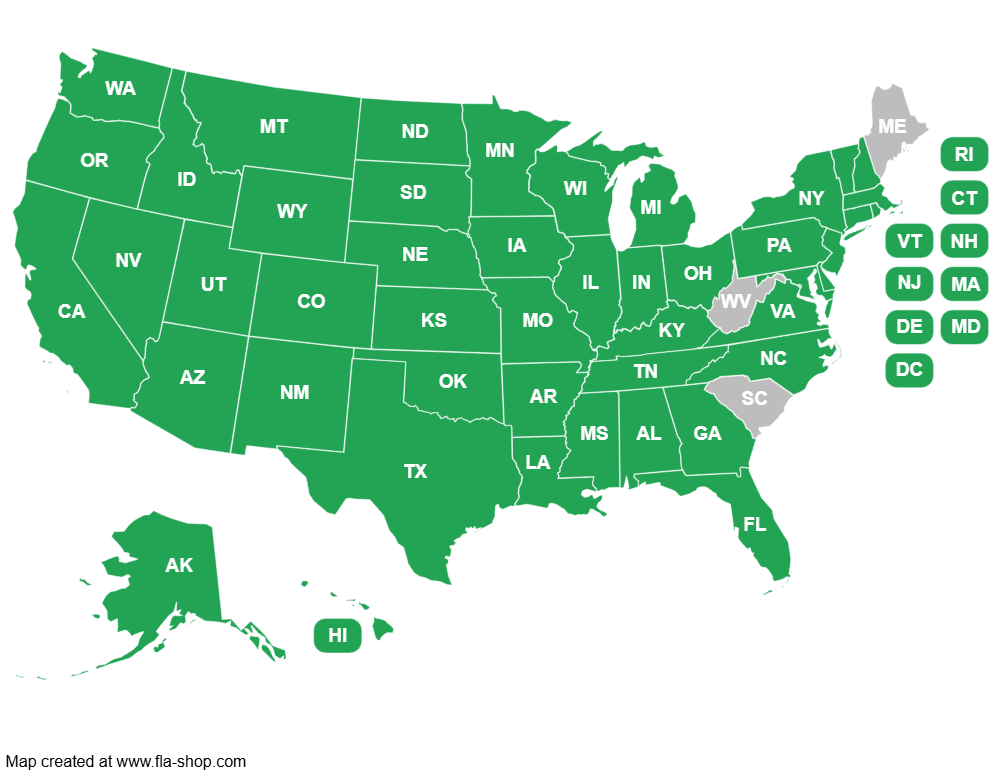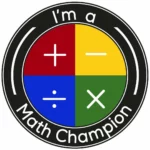A new school year brings new commitments to improving our practice as teachers of mathematics. One tip I often share with the teachers I coach is, “Ask more and tell less.” Well, that’s easy to say, but what does that look and sound like in the classroom?
Often times, the teacher’s guides are written following a more traditional, lecture-style of teaching. They encourage the teacher to model, or work problems, while the students watch, and then the students are asked to mimic what the teacher did with a similar problem. I challenge you to flip the script and replace the word “show” with “have the students model” and replace “tell” with “ask”. When your teacher’s guide says to show the students the difference or similarities between problems or concepts replace that with, “ask the students what they notice?” It’s these little tweaks that will go a long way toward engaging your students in meaningful discourse and ultimately deepening their understanding.

A fourth-grade teacher from Aurora, Colorado shared her strategies for engaging students in math talk in her classroom.
While this appears to be written for the students to follow, it also suggests some great questions for teachers to ask to generate more discussion.
As students are working through a task ask:
- How did you solve that?
- How do you know that’s correct?
- Can you solve it another way?
- Can you build a model?
- Can you use numbers and symbols to explain your model?
- Is that the best (most efficient) way to solve that?
- Is your answer reasonable?
- Do you agree or disagree with your partner’s answer?
So, who’s doing all the talking? Give some of these questions a try and let us know how it goes.










This fall I have been using “What do you notice?” and “What do you wonder?” as ways of engaging students, especially when we start new concepts. For example, yesterday we started class with each group holding a 1000 cube from a base-10 block set. I asked “What do you notice?” and I heard all sorts of great observations. They noticed the color, the weight, what it was made of, how many faces, how many vertices, how many cubes on one face, how many layers…and so on. Them we used that information for them to figure out how many total cubes are in it. The conversation was so much richer than me standing there and telling them the block was made of 1000 cubes.
Hi Kris! That’s so awesome – you can hear from your students that they are used to being asked questions that make them think. What’s super interesting to me, is that when I was in Singapore in 2007, I watched a teacher use a cube of connected linking blocks in a 5th grade class to discuss volume. She expected the students to see that the cube had layers, and if you found the area of a face, you could find the volume of the cube or cuboid. She asked how they could find the volume of the cuboid.
The students looked at he teacher, looked at the cuboids and said length x width x height, and struggled to notice or wonder anything, which happens a lot,when we start with procedures. My guess is that the students were not yet accustomed to answering those types of questions. So, to all reading, be patient and keep pressing with the questions.